#mass effect architecture
Explore tagged Tumblr posts
Text
Mass Effect screenshots for art references
Huge screenshot dump incoming! There will be 3 more parts to this in a reblog chain! Seriously there's 30 shots just of walls 😅 Find the full 4 parts >here< A collection of screenshots that I took for the purpose of creating backgrounds in art, and to study the textures, architecture, infrastructure and furnishings in mass effect Legendary Edition. These are practical rather than pretty aesthetic shots, if one seems completely random i'm probably trying to capture some wires, a floor tile or a sofa etc. I thought someone might find them handy! You are welcome to use and transform these in whatever way you wish and I don't need to be credited.
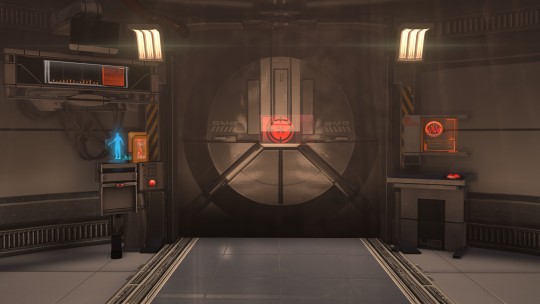
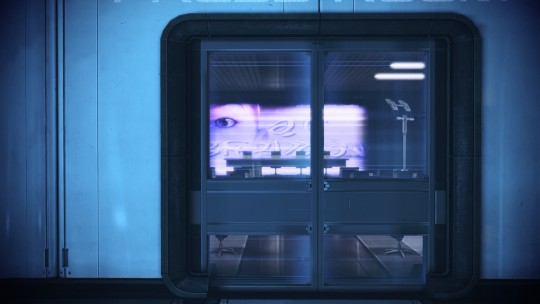
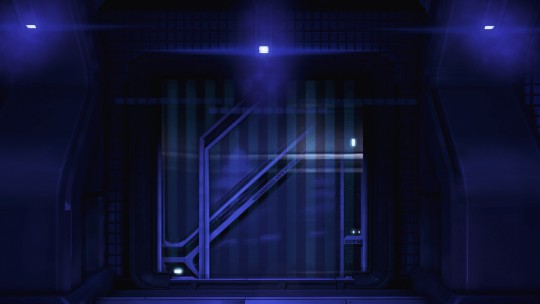
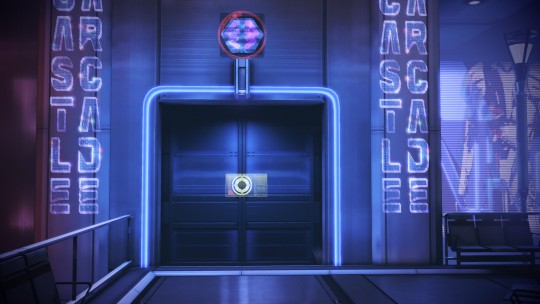

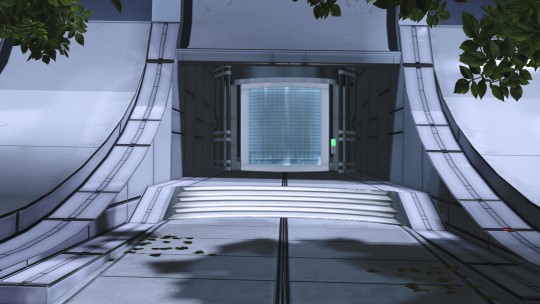
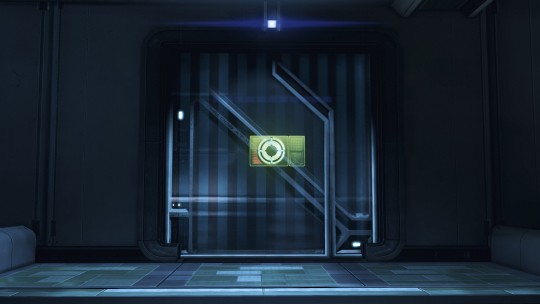
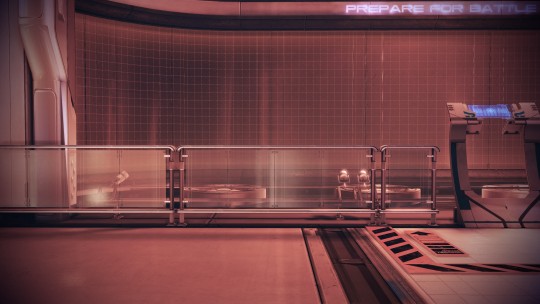
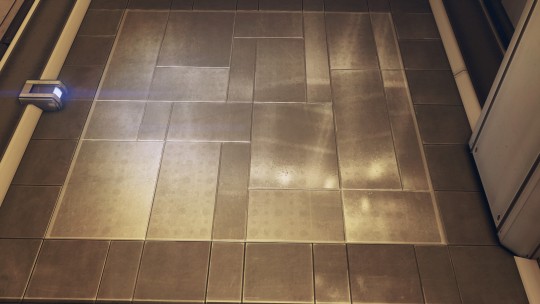
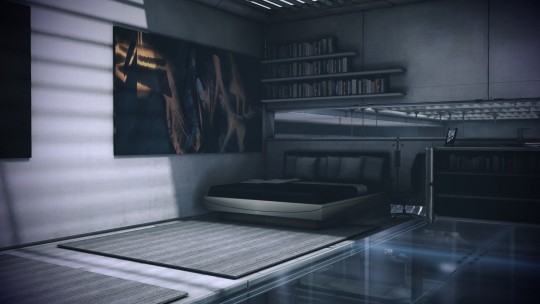
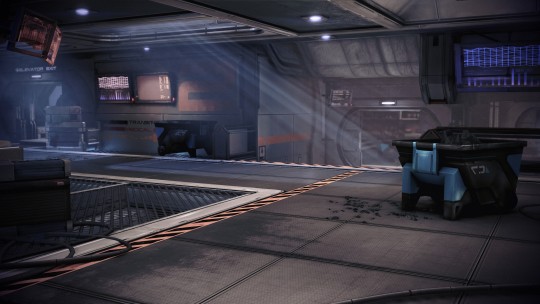
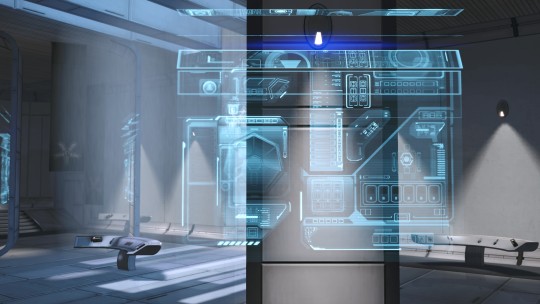
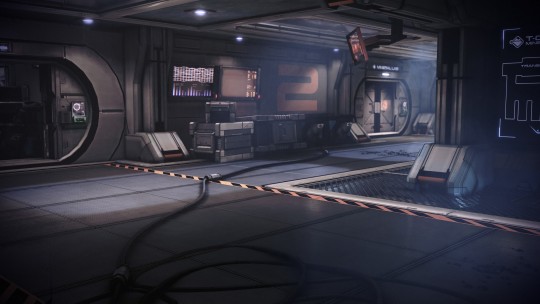
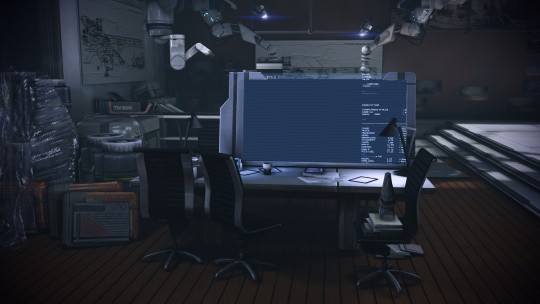

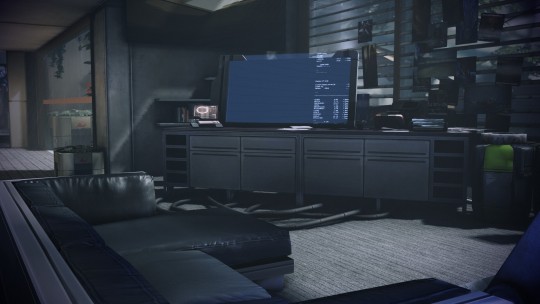

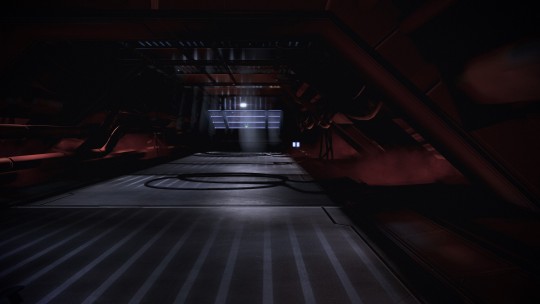
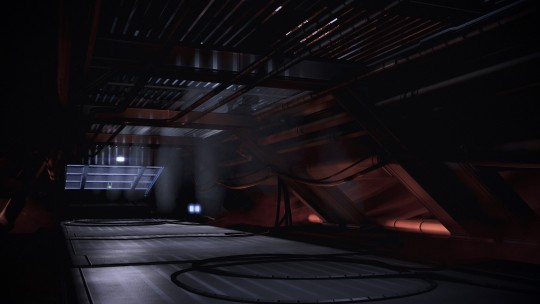
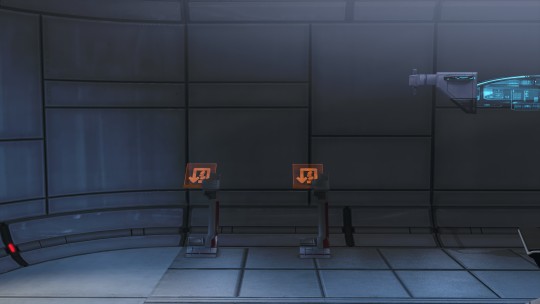
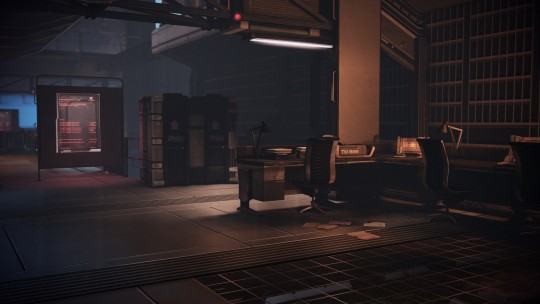
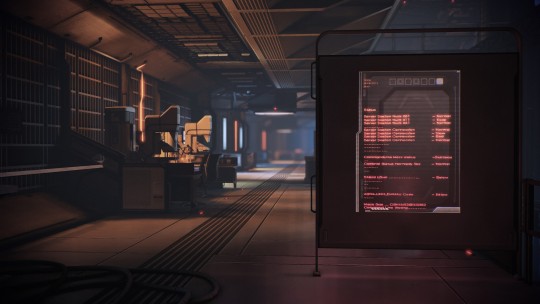
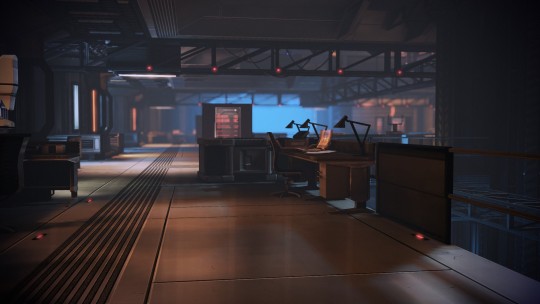
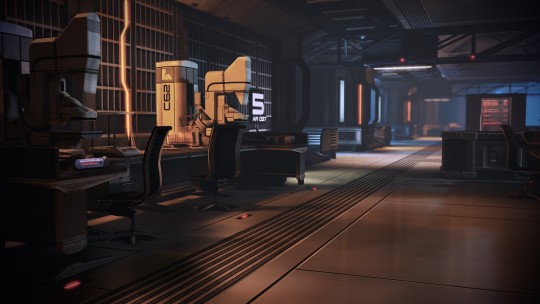
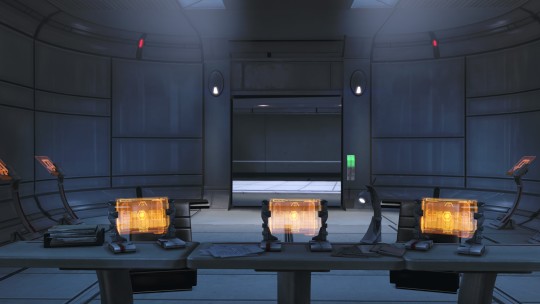
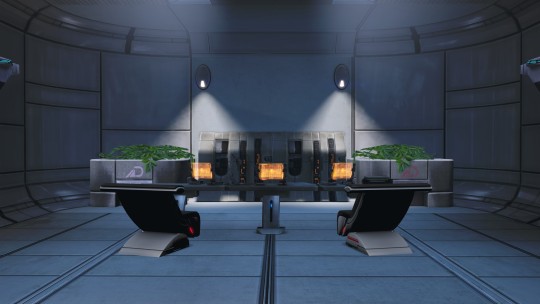
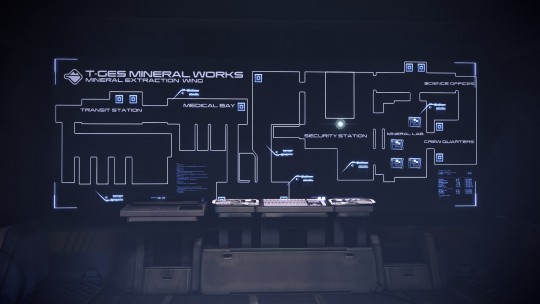
#part 1 of 4#mass effect#mass effect reference#mass effect architecture#mass effect infrastructure#mass effect furniture#mass effect scenery
247 notes
·
View notes
Text
Sometimes Andromeda is a phenomenal game and sometimes it's a slog and a bore and often it's very visually impressive and the dungeons are fun and sometimes WHY IS THIS DESERT LANDSCAPE SO FUCKING BIG THEY DID THIS IN INQUISITION AND NOW THEY'VE DONE IT HERE EVEN IN THE GODDAMN CAR IT TAKES FOREVER and sometimes it's just sort of. A game.
Also every single menu sucks and I'm constantly astounded every time I boot the game up at just how bad the UI is.
#I often think about how visually impressive the remnant vaults are like the first time you go in one and by the second or third it's.#It's just a dungeon now. Good dungeons for the most part. But you know. It's not building up to anything. Just a thing you do.#...because it's an optional dungeon.#Meridian doesn't really hit because it's just. More of that same architecture and visuals.#The main plot is nothing to write home about. The villain sure is a villain.#IF you do side content the Kett become a lot more interesting but that's a big if over a large period of the game#and a lot requires you reading extremely inaccessible small text#like the way the kett have a society and view exaltation as a gift and the process is practically religious#Like mass effect 1 was no stranger to reusing assets and visuals at all but it looked neat where it needed to look neat
1 note
·
View note
Text
youtube
The Mako is such a beautiful thing, is it not?
#mass effect#mass effect legendary edition#mass effect mako#I literally left it and it was fine#then came back outside and it was flipped over and stuck on the architecture#Youtube
0 notes
Text
(Arcane Meta) Hextech, the Anomaly Future, and Jayce's Hammer
One cool thing about the second hammer Jayce gets from the Anomaly future is it appears to have the opposite power of the hammer from his home universe.
The hammer Jayce forged and that is from his home universe seems to engage the Hexgem inside in order to make it weightless.
This follows the principles of his first experiments with Hextech, which were weightlessness and transportation.
In the Atlas Gauntlets and in his hammer, you can see how Jayce applied those principles to weaponry and tools. They are based on his original inspiration from the Mage who saved him, who made him and his mother weightless, and then transported them to safety.
These specific uses of Hextech by Jayce show a really fascinating understanding of how you could use weightlessness as a tool and then re-engage the weight to apply its full force, as seen with transporting ships at high speeds using the Hexgates, with Vi's gauntlets and here, with his hammer:

In contrast, it looks like Hextech in the Anomaly future works on the opposite principle. Rather than Jayce conceiving of Hextech to make the item it's put into weightless, it kinda looks like the beam from his hammer firing makes other things weightless and that Hextech in general might have worked like that throughout that universe:

See how all the pieces of architecture are floating, in what might be my single favorite shot from the whole show.
The effect from Jayce's hammer in the other universe is also inverted:

Where after he shoots the pillar, the pieces of it continue to float after. (By the way, the architectural feats you could accomplish if you had the power to make things weightless like that would be staggering.)
Jayce's hammer also stopped working when he went to the other universe, implying that Hextech doesn't work the same way there for some reason, perhaps because Jayce and Viktor innovated on it along different principles, or perhaps because the entire polarity is inverted in that universe so Hextech magic can only project outward instead of inward.
The fact that his alternate universe hammer doesn't have the weightlessness power at all further creates strain for Jayce when he needs to fight with it. In addition to having less muscle mass in general because of his time in the cave, and a permanently damaged leg, Jayce can't engage this hammer's power to become weightless the way he could in the Shimmer Factory fight, so he has to drag it along and throw all his weight into swinging it around:


Because the design of that hammer is basically an anvil on a stick when you can't engage the weightlessness. It's very cool looking but it is not fast anymore.
And one more note to end on, but Jayce throughout the show tends to innovate uses for Hextech along the same lines of weightlessness and transportation, all based on the original spells he saw his Mage use. You can see those innovations, as mentioned, in the Hexgates, the Atlas Gauntlets, Caitlyn's rifle which use the Hexgate runes to speed up the bullet, and his hammer.
Viktor by contrast innovates on a different path entirely, with the Hexclaw which is a beam of light and doesn't rely on weightlessness or transportation, which makes it truly innovative compared to the original inspiration of the Mage (who is... also Viktor...). And of course, the Hexcore itself, the machine learning/AI version of Hextech that as noted in the show, doesn't rely on using runes as single application tools like Jayce, a toolmakers, does.
583 notes
·
View notes
Text
Me: I don’t deny your identity. I acknowledge Palestinians exist today.
Them: Jesus was a Palestinian, not a Jew!
Me: Well, no - he was a Jewish rabbi. He had a bris, kept Shabbat, kept kosher, & his “Last Supper” was a Passover Seder. Besides, nobody would be called “Palestinian” for ~1,900 years after #Jesus died.
Them: Jews are #Khazars with no history in Palestine!
Me: Well, no - millions of DNA samples have now scientifically proven that Ashkenazi Jews (like their Sephardi & Mizrahi brothers & sisters) originate from the Levant (Israel).
Ashkenazi Jews migrated to the Rhineland (western #Germany) between 800-900 CE.
#Yiddish - the language spoken by #Ashkenazi Jews for a millennia - is a mixture of Jews’ original Hebrew & adopted #German.
Meanwhile, there is no evidence of any Khazar influence on Ashkenazi customs, language, or culture.
The #Khazar tale (claiming some or many Turkic Khazars converted to #Judaism), while interesting, is not supported by any archeological evidence, and can be considered nothing more than a story.
Besides, it’s unassailable that the Ashkenazim were living ~1,500 miles from the Khazars, which may as well have been on the moon in the Middle Ages.
Them: Palestinians are Canaanites, the original inhabitants of the Land!
Me: Well, no - there’s zero evidence the Palestinians are Canaanites. This theory followed other similarly false claims over the past several decades that the Palestinians descend from the Philistines (an ancient Aegean Greek “sea people”) and even the Jebusites - a people for whom there is no evidence outside of the Bible of their having ever existed (if they did, they have been gone for at least 3,000 years).
One thing is clear, all of these recent tall tales about Palestinians’ ancient roots in “Palestine” were created in an attempt to delegitimize the State of Israel & not as some academic attempt to find Palestinian roots.
The #Canaanites (who spoke a language similar to #Hebrew, not #Arabic) have been extinct for more than 3,000 years; and there are no #Canaanite influences in any modern Palestinian language, culture, cuisine, customs, or religion.
Furthermore, DNA studies now prove Canaanites are closest in descension to modern-day Armenians & Western Iranians - but, culturally, there has not been a “Canaanite” people in ~3,000 years.
Meanwhile, there is a practically infinite amount of archeological, biblical & non-biblical text, and architectural evidence proving beyond any doubt that Jews lived in the Land of Israel continuously for more than 3,200 years.
Arabs only started arriving in Eretz Israel in significant numbers during the Arab Imperial conquest out of the deserts of the Arabian Peninsula in the mid 7th century CE when the Land was still majority-occupied by ~350,000 Jews.
Arab conquerers #colonized the Land of Israel & subjugated the Jewish majority.
That’s right, the Arabs were the #colonizers - this is historical fact no matter how much that might make your head hurt.
Them: The Jews are foreigners who stole Palestinian land!
Me: Ok, now you’ve officially ticked me off by repeatedly denying MY identity - one that was OBVIOUS to everyone before the last ~55 years when KGB-inspired propaganda went into mass effect in an effort to delegitimize Israel.
Can’t say the same about your identity … even though I keep trying to offer to respect it!
The Arabs only ruled Eretz Israel after conquering it in the 7th century & until they were kicked out by the Seljuks ~400 years later. Never during that time, did they even attempt to establish an Arab or #Muslim state or capital anywhere in Eretz Israel (Jerusalem is never mentioned in the Koran, and while the city is holy to Sunni Muslims, it is not holy to Shia Muslims).
And during the time of Arab rule, there was obviously no state or country called “Palestine.”
Then, during the 400 years before the start of the British Mandate around 1920, the Land was a distant & severely neglected province of the Ottoman #Turkish Empire.
In fact, in the late 19th century, as Jews began moving back to their homeland in larger numbers, there were only ~200,000 people living there (mostly a sparse, nomadic population), and Jews were the majority in #Jerusalem.
Post-WWI, the League of Nations (the precursor to the UN) legally granted Britain a "sacred trust" called the Mandate for Palestine (a name given to the land by Roman Emperor Hadrian in 135 CE).
The Mandate for Palestine was the least controversial of the 15 post-WWI mandates because everyone KNEW Jews were from “Palestine.”
So the Mandate for Palestine, which included the legal requirement for Britain to aid in the establishment of a Jewish National Home, passed unanimously by the League of Nations.
Among other things, the unanimously passed & legally-binding Mandate recognized “the historical connection of the Jewish people with Palestine and to the grounds for reconstituting their national home in that country.”
Besides, before the Jews started returning to the Land in large numbers in the late 19th century, it had become almost entirely war-torn ruins, arid desert & malarial swamps.
But the returning Jews were determined to rebuild their homeland; and the evidence is undeniable that Jewish labor & the Western technology they brought along helped to make the desert bloom again.
The result of a new booming economy in the midst of mostly rural, undeveloped land is no surprise; and hundreds of thousands of Arabs from neighboring lands immigrated to Mandate Palestine in the early to mid 20th century.
In fact, once Arabs began to rebel against the Jews (with pogroms & full-blown barbaric massacres on a particularly wide scale in 1920, 1921, 1929, and in 1936-1939), they made extremely clear to the British that they resented the name “Palestine,” which they claimed (incorrectly) was a modern Zionist invention.
For example, at the British Peel Commission in 1937 (looking into Arab riots from the year before), local Arab leader Audi Bey Abdul-Hadi testified that “[t]here is no such country [as Palestine]! Palestine is a term the Zionists invented!”
Again, during the 1946 Anglo-American Committee of Inquiry that was set-up to make recommendations for the territory, Arab-American historian Philip Hitti testified, “There is no such thing as Palestine in [Arab] history, absolutely not.”
The Arab position was not particularly surprising, as "Palestine” is not an Arab word (Arabic does not even have a letter “P” or a sound for “P,” which is why you often hear Arabs today pronounce it with a “B” as “Balastine”).
The Arabs in the Land at that time mostly identified with their local clan & otherwise considered themselves “Arabs” of “Southern Syria.”
In fact, just about anyone who was called a “Palestinian” pre-1948 was a #Jew.
This is why nobody made any attempt to create a “Palestinian state” during the 19 years between 1948 and 1967 in which #Egypt occupied #Gaza & #Jordan occupied the “#WestBank.”
The hard truth - even though I’m still acknowledging a #Palestinian people exists today - is that an Arab “Palestinian” identity was created for the first time in any signifiant way at the height of the Cold War in the mid-1960s & at the behest of the #Soviet#KGB, which wanted to expand its influence in the region, undermine the only democracy in the Middle East, and which had been repeatedly embarrassed by Israeli victories over invading Soviet-backed & Soviet-armed Arab states.
So the KGB wrote the ridiculous “Palestine Liberation Organization” (PLO) charter & molded Yasser Arafat at what was known as “KGB U” in #Moscow to use #terror & #propaganda to destabilize Israel.
Over the decades since then, many Arabs in the Land have come to self-identify as “Palestinians.”
Even among Palestinians today, however, many still identify with their clan over a separate “Palestinian” nationality (e.g., the clans do not intermarry & many are constantly engaged in some degree of violent conflict).
And the 2 million+ Arabs citizens of the State of Israel (who have equal protection under the law & more rights & privileges than they would have in any Arab and/or Muslim country on Earth) almost exclusively identify as either #Israeli-#Arabs or as simply #Israelis - not as #Palestinians.
Them: #Jews … I mean #Zionists … are bad, ok? Just ask the UN.
Me: Right. Just ask the #UN
Captain Allen
@CptAllenHistory
597 notes
·
View notes
Text

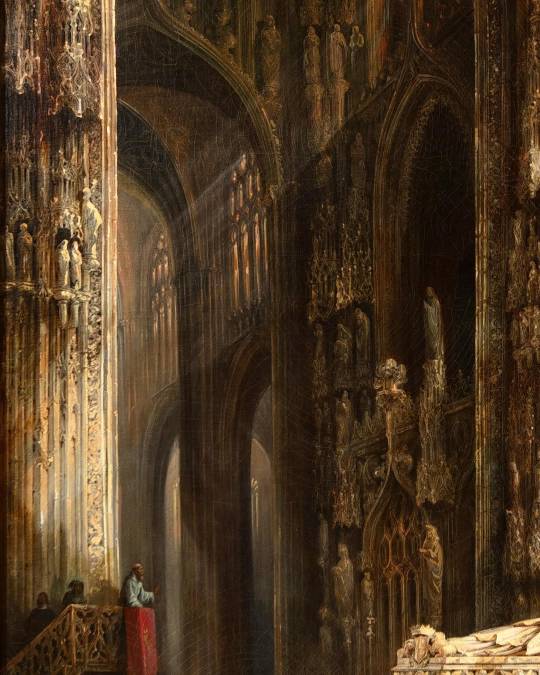

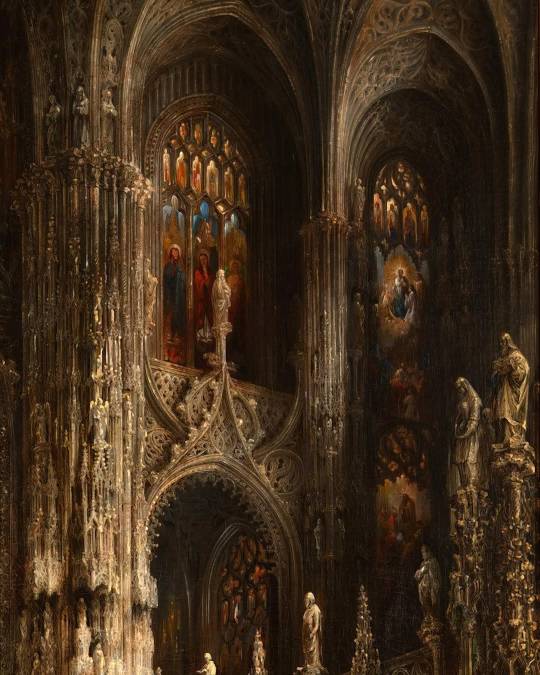


GENARO PÉREZ VILLAAMIL - INTERIOR VIEW OF A CATHEDRAL, 1850
The cathedral's interior is filled with ornate elements such as arches, columns, and detailed sculptures. Villaamil is known for emphasizing the scale of the buildings, often making the structures appear even larger relative to the human figures present, enhancing the monumentality of the space. The use of light is significant in this painting, with golden hues illuminating parts of the cathedral, highlighting architectural details, and creating an ethereal atmosphere.
The painting reflects the Romantic interest in medieval times, especially the Gothic architecture of cathedrals, which was seen as embodying the spiritual and cultural zenith of the Middle Ages in Europe. While not depicting a specific event, the figures within the cathedral could suggest typical or daily religious activities like prayer, contemplation, or attending mass, which are part of the broader historical context of Christian worship in Spain.
Villaamil employed a linear perspective to create an illusion of depth and distance, causing the cathedral to seem grand and enormous. The converging lines of the columns and arches draw the viewer's gaze into the painting's depth. He utilized chiaroscuro (the contrast between light and shadow) to give volume to his architectural forms and to produce a striking, almost theatrical lighting effect. This method helps in emphasizing the intricacies of the carvings, statues, and stained glass.
55 notes
·
View notes
Note
So, I’m a big sucker for in-detail worldbuilding, and I have some questions regarding your Transformer-humans AU. Since the Quintesson invasion occurred in the 20’s-40’s(?) what’s some cultural “fun-facts” that results from that? Like how does car racing come about, since the Prohibition mafias/gangs that originated NASCAR probably didn’t exist or were wildly altered? Does chocolate chip cookies still exist? What about other popular medias from that time? Do spaghetti westerns still exist? Etc.
Ooooh this is one of the questions I want to turn around in my head like a rotisserie chicken while I think about 5++ paragraphs of bouncing off the walls BS but I'll try to throw in what I know as of currently! One also has to note that it's going to be hard to condense 'cultural facts' since TTB doesn't take place in the Americas nor is it even constrained by one specific landmass.
There's going to be some rambling, so everything under the cut!
There is a 20-year gap in human culture/subculture circa the 1920s where time effectively 'stopped' for a lot of people due to the invasion, so a lot of the 1920s aesthetic is preserved and celebrated as the 'golden age' before everything change, even more so than it is now. A lot of the (western) characters dress in what you'd probably consider Modern Gangs Of New York (waistcoat, flatcaps, suspenders, etc) sensibilities, despite tech advancements.
Going off the above, a lot of the architecture you'd see is neo-Art Deco in nature.
Cars are an interesting questionmark here, mainly because I've established earlier on that they are nowhere near as commonplace as they are in our actual, current world, and not even in the Global Car Central of the USA. This is mainly due to prioritisation of resources for rebuilding (Quintessons did not care for oil given their advanced tech, but they very much coveted minerals/rare earth elements/metals during their invasion so distinctively, the rich in TTB are steel barons, not oil barons), so even middle-range cars tend to be a bit of a luxury item and will turn heads. Most governments aren't going to allocate those resources for mass production of personal vehicles (excluding utility vehicles like jeeps and trucks). Your average Joe relies mostly on public transport, like trains, trams, LRTs and Workers' Buses established by companies for their employees in less developed areas.
Per the above, NASCAR in its original iteration doesn't exist. There IS car racing, but it's consider 'upper class', rather like horse racing, and is the hobby of those who can afford it. Think the 24 Hours of Le Mans. It's not really 'accessible' to the common folk and it's mainly focused on reviving the personal automotive industry as a recreational/luxury sector.
That said, two-wheeled vehicles are a different story. These are smaller, take up less resources, are easier to maintain, modify and more importantly, hide. By 2050, they're the most popular form of personal transport, and Gojek-like delivery services are common in cities (Groove is a Gojek-type rider).
As such, motorcycle races are much more popular than car races in TTB due to the accessibility factor and how often they were used during the Quintesson Wars, being easier to move around, maneuver and harder to target. Quintesson War rebels on the ground took to motorcycles like the Bedouins/Mongolian soldiers to horses, and would decorate them the same way pilots would decorate their warplanes.
Therefore, the common layfolk go fucking bonkers for MotoGP, and biker gangs are very common.
There is the Olympics which focuses on the countries coming together, but also something like a massive global 'War Games' that occurs once every decade from 1950 to 2050 on the anniversary of earth's victory in the Quintesson Wars which focuses on each country's readiness and collaboration with others to face future invasions. It's a pretty huge affair.
Going off the veneration of the Roaring 20s, Speakeasies are still a thing here, but to the layfolk, they aren't as associated with crime as they are with rebellion. They're still known for serving alcohol but due to their hidden nature, they were also where fragmented communities would seek shelter/gather to relay plans. Within the USA, against govt regulation, some still operate in the dark smuggling contraband to underserved communities and providing an underground network for Cold Constructs to flee to borders, for a price of course.
Company Towns are common, due to logistics during rebuilding efforts---it made sense to have workers all in one area, and also made it easier to segregate the different classes from one another.
Spaghetti Westerns PROBABLY still exist to some extent, but nowhere near the level of Space Westerns. Because aliens cropped up in the timeline way, WAY earlier and left behind tech in the wake of their invasion that sped up mankind's space programmes, daytime TV would be proliferated with shows like Firefly and Battlestar Galactica.
Television itself skipped several stages---there was no setup for mechanical televisions. What TTB knows as 'TVs' were reversed engineered from stolen Quintesson tech (screens, similar to LCDs today), and the first 'TV's were basically used to break into Quintesson comms and spy on them/broadcast plans from one rebel cell to another.
The discourse between 'alien-friendly' media like Star Trek and propaganda-style 'alien negative' ones like Starship Troopers is intense.
Godzilla is. Very popular here. With a divergent background that he was was one of many animals mutated by Quintesson experiments to create biomes that better suited them. Against the alien threat of Ghidorah, he represents earth's ability to persevere, evolve and become a terrifying entity against alien forces seeking to subjugate it.
Science-adjacent, but Penicillin was discovered on the advent of rebels figuring out that aliens aren't well-quipped to handle diseases and infections caused by bacteria native to earth, and started employing biological warfare against them in the early stages of the counterattack period, before they had mastered the use of tech warfare/mobilized enough resources to take on the Quintessons head-on.
Chocolate chip cookies wouldn't be a thing for a while due to the lack of chocolate specifically, which is an industry only redeveloped back to commercial levels years after the invasion ended (it wasn't a priority). Its creation was likely attributed to a lower middle class woman attempting to spread out what little chocolate she managed to get her hands on to feed several people in a way that didn't necessarily feel like it was being 'rationed', and it became a popular, economical way to enjoy this little luxury.
33 notes
·
View notes
Text

“The granite complex inside the Great Pyramid, therefore, is poised ready to convert vibrations from the Earth into electricity. What is lacking is a sufficient amount of energy to drive the beams and activate the piezoelectric properties within them. The ancients, though, had anticipated the need for more energy than what would be collected only within the King's Chamber. They had determined that they needed to tap into the vibrations of the Earth over a larger area inside the pyramid and deliver that energy to the power center—the King's Chamber —thereby substantially increasing the amplitude of the oscillations of the granite.
Modern concert halls are designed and built to interact with the instruments performing within. They are huge musical instruments in themselves. The Great Pyramid can be seen as a huge musical instrument with each element designed to enhance the performance of the other. While modern research into architectural acoustics might focus predominantly upon minimizing the reverberation effects of sound in enclosed spaces, there is reason to believe that the ancient pyramid builders were attempting to achieve the opposite. The Grand Gallery, which is considered to be an architectural masterpiece, is an enclosed space in which resonators were installed in the slots along the ledge that runs the length of the gallery. As the Earth's vibration flowed through the Great Pyramid, the resonators converted the vibrational energy to airborne sound. By design, the angles and surfaces of the Grand Gallery walls and ceiling caused reflection of the sound, and its focus into the King's Chamber. Although the King's Chamber also was responding to the energy flowing through the pyramid, much of the energy would flow past it. The specific design and utility of the Grand Gallery was to transfer the energy flowing through a large area of the pyramid into the resonant King's Chamber. This sound was then focused into the granite resonating cavity at sufficient amplitude to drive the granite ceiling beams to oscillation. These beams, in turn, compelled the beams above them to resonate in harmonic sympathy. Thus, with the input of sound and the maximization of resonance, the entire granite complex, in effect, became a vibrating mass of energy.” ― Christopher Dunn, The Giza Power Plant: Technologies of Ancient Egypt
38 notes
·
View notes
Note
How densely packed are the larger Wardin cities? Is there any notion of urban planning?
In general, there's a solid notion of urban planning in each city, but most of the major coastal cities have experienced tremendous growth of an urban commoner class in the past 200 years that has outstripped ability to adapt. These are pretty crowded places by and large and pack a lot of people into relatively small areas.
The best and worst simultaneously is Godsmouth. It actually has the most coordinated urban planning from the ground up, but the layout of the city makes Accommodation to growth very difficult. It's the only major city whose core area (which historically was The City Itself) is entirely walled, with its unwalled outskirts having grown rapidly to accommodate.
It also exhibits the polar opposite class-space stratification of most of the other cities. Wardi nobility has historically been defined upon landowning (in most cases physically occupying the land they own in defensible architecture), and as such most nobles live in the agricultural areas fringing the cities rather than in the core. Godsmouth follows the opposite pattern and is the hub for the recent (within the past two centuries) 'new money' nobility class (developed out of mercantile wealth rather than historical landowning). The architecture of the city itself is very distinctly stratified by class, with living within the innermost of two walls being a privilege reserved for the upper classes (as well as being where most major temples and governmental offices are housed). The outer walled area predominantly holds a sort of ambiguous 'middle class' (considered commoners but occupying positions of moderate material wealth) as well as most urban services/guilds, which is itself a fairly new feature and not something that has become fully stabilized within this society.
The urban poor have largely spilled out into newer developments surrounding the outer walls (built up from pre-existing farming towns/villages) that are now an extension of the city proper. These are very crowded, with the expansion of this population cutting into much of the arable land that provides for the city. This growth began as just 'squatters' building homes where they could, but has been taken over and managed by provincial officials that have directed this expansion into fairly coherent neighborhoods built into the infrastructure.
The urban takeover of significant swaths of farmland is a major concern. Godsmouth is increasingly reliant on imports of grain rather than its immediate farmlands to provide for its population (the province itself also has none of its own tributaries to supply grain locally). This has worked for most of its contemporary history (being THE center for sea trade in the region and receiving tremendous volumes of grain) but makes this place very, very vulnerable to famines.
The use of mass-housing is most prominent here, with most new constructions of homes being in the form of (small) 'apartment' buildings (usually with each being 2-3 stories and containing anywhere between 2-10 living areas). These apartments occur both in the first inner ring and the outer sprawl, though tend to be smaller and nicer on the inner side. These are usually built side by side with tiny alleys in between, and tend to be the dirtiest areas (waste is often dumped out alley windows, where built-in grooves at least Eventually wash it into sewers).
Godsmouth Does have some pretty damn good infrastructure. Imperial Bur left it with some very solid water/sewage systems, which has been expanded and further improved upon in the centuries since. It gets a bad rep in other parts as being claustrophobic, smelly, and dirty, (noted for having incense burnt 24/7 in its apartment neighborhoods, with the resulting effect being the aroma of human body smell and shit mixed with sweet musk and rosemary) but the infrastructure and planning that is keeping it from being Much Worse is underappreciated. It's also noted positively for its relative lack of street dogs (which is a mixed bag, as these animals Do help clean refuse) and the unique feature of urban hyenas living permanently and (mostly) peacefully in its unwalled sprawl.
Among the other provincial capitals, urban population levels from highest to lowest are Wardin > Ephennos > Erubinnos > Jaitse > Lobera > Erub.
All of these cities are spread over larger areas of land (having been built up around naturally defensible geography with small central fortress areas) and are a lot less tightly packed. All of them have developed water systems, but many of these cities' water infrastructure was built (or at least broadened) much more recently and varies in quality. Out of these cities, only the first three make large scale use of tightly packed apartment complexes for the urban poor. None of these have had the same issues with development severely encroaching on neighboring farmland. Most have intentionally followed strategies of building up nearby towns + expanding farm development to previously uncultivated land + intensifying/expanding livestock production on unarable grassland/scrub to accommodate population growth (severely restricting the growth of an urban commoner class by strongly maintaining and attempting to acquire land for its landed nobility + agricultural peasantry systems).
34 notes
·
View notes
Note
Hello :D, ever since I saw the mentioning of Chains the Underdogs, as well as your comment about the dynamic between Silver, Turnbuckle, and Scroop, I have been very interested with how you interpret these characters. Is it okay for me to ask:
What are your headcanons and/or character analysis of Turnbuckle as well as your interpretation of the Zirrelian’s culture?
Hello! I actually have the most information for Zirrelians and Turnbuckle,, they’re my favorites, lol. I’ve been wanting to talk about CtU, but I haven’t been drawing lately xd. Here’s my headcanons for both (under cut) (I also didn’t proofread this so ignore the mistakes):
Zirrelians
According to the art book, Zirrelians are an octopus-based species, so I imagine they share many traits. The most prominent traits they share are the following:
Color changing - Originally for camouflage, it is now considered more of a traditional art form and extremely important communication device. Their color changing ability develops early in life as result of their diet. If a young Zirrelian had a good diet, their colors will be very vibrant; but if they had a poor diet, their color changing ability will be very dull or not even visible. Young Zirrelians use their colors to communicate personality and emotions to each other, making the skill extremely valuable to a young Zirrelians development and socialization. Radiation from solar winds can also cause defects in Zirrelians colors at any age, lessening their ability and colors as a whole- many Zirrelians in the Navy (aka, Battle at Procyon) have very dull skin for this reason.
Venomous bite - Like a majority of octopi, Zirrelians have a venomous bite. This venom is not fatal however, it is more of a paralyzing type, its effects were worse early on, but have died down since they found more “sophisticated” ways to hunt. Their venom is highly utilized in their society nonetheless, specifically for medicine, much like how rattlesnake venom is used for medicine.
Familial - Like female octopi, female Zirrelians are extremely overprotective of their young and defend them with their life. Naturally, Zirrelians are more on the solitary side of social practices, and when young Zirrelians reach their early teen years, they become independent.
(I also imagine that baby Zirrelians are very small, much like baby octopus, lol, someone depicted that here!)
For their home planet, Zirrelians are native to a (unnamed) oceanic planet. There is not many large land masses here, just islands scattered everywhere across the world. The terrain has many cliffs and the climate is Mediterranean based: arid-wet in most places with a handful of dry-desert islands. Due to the geography of the planet, they were originally a mostly aquatic species, but due to technology advances, they’ve now become more semi-aquatic.
Zirrelian culture is heavily based in Spanish- especially Southern Spanish- and Mediterranean culture (totally not projecting lol). Their architecture is very ostentatious, and they limit environmental damage as they hold nature at a high standard. Zirrelians are probably most well known for their cuisines, they are omnivores and their food is composed of mainly fish, insects, and native plants. In the film, I imagine the “Zirrelian Jellyworms” Sarah serves in her diner are a delicacy for the Zirrelians. Aside from food, they are a very creative species and utilize their color changing abilities in art. In general, their art history is very rich and they are definitely one of the more “colorful” societies.
Now, with that out of the way, here’s how I imagine Turnbuckle:
Turnbuckle
Backstory: Yoel Turnbuckle (full legal name oh ehm gee) was the only child of his mother, he is also unaware of who his father is. He grew up in poverty, and never developed his colors as a result of poor living conditions, leaving him a dull green color his entire life. This caused him to be isolated from other Zirrelians since he could never properly socialize with them without colors. Growing up, he felt very lonely and ended up forming a very strong bond with his mother.
After a few years, him and his mother eventually moved to a new planet since they could not afford much. This is where Turnbuckle ends up staying most of his life: Pelsanor, a prairie land planet covered in many small water sources (think the midwest region of the US in a way).
Unfortunately, his time with his mother was cut very short on this planet. Pelsanor may be a nice place, however, its poor society has resulted in much crime. Turnbuckle was separated from her after being perused by poachers in the reason (as Zirrelians are commonly poached for their color changing coats and venom). He never saw his mother again after this, and her whereabouts still remain unknown. He assumes she’s dead, as much as he doesn’t want to.
Being left with no one at such a young age really wrecked him, for most of his teen years he offered to aid sailors and was an engineers mate on a train. From his minimal cabin boy years, he learned how the helm of the ship works along with steering and galactic navigation, as an engineers mate, he learned basic properties of solar power and how it’s utilized on both trains and ships. Turnbuckle was never able to gain a ship of his own though, and being with practically no income or stable home, he was unable to get a real job. It wasn’t long until he resorted to stealing, at least this way he had some source of income and food, and as some of the others on Pelsanor, he became another bandit in the region.
Fast forward a few years, John Silver had been exiled from Ironbeard’s crew and had fled on a longboat after his old crew and Captain essentially thrown him out via attacking him . The longboat he’d fled on had been damaged in the process, where he soon crashed on Pelsanor.
Turnbuckle was the first one he met on this planet, he found Silver wandering the plains a few hours after his crash. They started off as strangers, Turnbuckle only bringing Silver to a nearby town so he could at least eat, but the two started staying near each other over time. One had what the other didn’t: Silver was a strong leader, savvy, brave, and had good charms and wits. Turnbuckle was loyal, introspective, cautious, and cynical.
With neither having a ship, they became a bandit duo Pelsanor, notorious for robbing many trains.
-
Overview: Turnbuckle was definitely and still is more fond of Silver than anyone else in the crew, that is why he was chosen as his First Mate (that and being the first one Silver fully trusted). However, Silver is too hellbent on finding Treasure Planet that he doesn’t acknowledge Turnbuckle’s presence commonly. Turnbuckle isn’t focused much on the actual Treasure Planet, but what will come after it: Will Silver abandon his crew after he finally finds it? Will he continue his piracy? And most importantly, how will this affect his “need” for his crew? After all, they spent the past 20+ years finding this place and this place only.
Turnbuckle wants to stay with Silver, the Ursid was the first being that Turnbuckle had become attached to aside from his mother. Being isolated his entire life hadn’t done a good deal to him at all, and now, if the man he’s spent what is practically most of his adulthood with leaves him for some riches, what then?
It was something he’d approached Silver about multiple times, but he never got a defined answer. Silver’s greed was slowly growing over him as he aged, he wanted Treasure Planet at all costs, which had caused his relationship with Turnbuckle gradually lose some of his closeness. In fact, Turnbuckle was even neglected by him at some points. Despite Silver’s worsening behavior, Turnbuckle still remained heavily loyal to him.
-
Film (and some Battle at Procyon):
Turnbuckle willingly agreed to Silver’s plan to pose as a crew, relieved at the thought of their search finally being over after all these years (note, they were roughly in their mid to late 20s when they met. Canonically in film time, they’re both in their mid 50s).
However, as the events of the film progress, it doesn’t take long to realize that Silver is softening up to Jim. Understandably, Turnbuckle is upset by this. He’d been with Silver since the beginning, never had Silver ever softened up to him in such a way, but now he’s softening up to some random boy he’d just met? Turnbuckle never acts on his disdain for Jim (unlike the other pirates, especially Scroop), if they were to finally reach their goal, why would he want to possibly risk his relationship with Silver becoming more distant? And after all, maybe this was just a temporary relationship his Captain and Jim built.
As the voyage progressed though, more tension did arise. Turnbuckle never liked Jim- he was jealous of his relationship with Silver. Silver could recall more touching moments he’s had with Jim in the past few months than he did with Turnbuckle in the past 25 years. And this became surprisingly obvious during the mutiny- Silver refusing to shoot Jim after he got the (fake) map, and Silver trying to stop the canon that was aiming to shoot down the longboat Jim, Amelia, and Delbert were all escaping in.
Come the actual Treasure Planet, when Silver tried to push away his care for Jim, it was right back to the original thing that he neglected Turnbuckle for- his greed. Essentially, he was too infatuated with the actual physical treasure that when the planet started falling apart, he was more concerned for all the Treasure being destroyed rather than half of his crew literally dying.
Now, I know Turnbuckle technically died, however, I accept all events of Battle at Procyon canon. So, he survived Treasure Planet (also this because I’m biased and he is my fav character lol), but in my canon he has many injuries that are not depicted in BaP.
I imagine he originally visited Silver in the Procyon prison to break him out. Treasure Planet was finally over, he could be with Silver again- just like they started out. But no, Silver’s only concern now is Jim, and he gives Turnbuckle the Dark Matter clump to warn Jim of the ironclads.
Turnbuckle reluctantly agrees to this, maybe after THIS then they’d finally be back together. Of course, Turnbuckle risked his freedom to deliver the Dark Matter to Jim, and was arrested. At this point, I imagine Turnbuckle escaped prison, but guess what? Silver is dead. He died SAVING JIM. So what now? Turnbuckle is back to the beginning, most of the crew is dead or has unknown whereabouts, now he’s back to being lonely.
-
There is so much more I could say about Turnbuckle as I have so much ideas and headcanons for him (as well as the Zirrelian species), but I believe this bit should answer your questions!!
#Sorry this took so long I had to organize my ideas LOLL#Ask#Helm txt#Chain the Underdogs#Mr Turnbuckle#treasure planet#treasure planet battle at procyon#battle at procyon#Turnbuckle treasure planet#I don’t know if I should tag this as Silverbuckle lol#Cause their platonic relationship is rooted in the ship I fear#In my mind they’re just the alien pirate version of Brokeback Mountain okay
22 notes
·
View notes
Text
<div style="white-space:pre-wrap"> <meta character-arc-alert="REAL_STORY_REQUIRED"> <script> ARCHIVE_TAG="CHARACTER_PUNISHMENT::DISNEY_ARC_CULL::NO_ESCAPE_BUTTON" EFFECT: audience discomfort, plot consequence enforcement, emotional story architecture TRIGGER_WARNING="death of idealism, harsh realism, story pain" </script>
🧠 BLACKSITE SCROLLTRAP — “IF YOU’RE NOT WRITING A SERIES, THEN WHY ARE YOU SCARED OF A REAL ENDING?”
===
Let me ask you something that might sting:
If your character arc isn’t going to have a sequel… Why the hell are you so afraid of giving them a real ending?
No, not a sanitized redemption. Not a little bow-tied “he learned something about himself.” Not that soy-drenched “and they all healed” finale you got hand-delivered from the mass-market mouse you subconsciously worship.
I mean a REAL ending.
One where they lose.
Where they get punished.
Where they succeed too late, or fall just short.
Where they save the world… but nobody ever knows it was them.
Where the truth dies with them.
Where no one claps.
Where no one is waiting on the other side of the final door with open arms.
Where the audience stares at the screen in silence when the credits roll — not triumphant, not inspired… but changed.
Let’s be blunt.
Your character doesn’t need another trilogy.
They need to suffer the consequence of this one.
Remember the ‘80s and ‘90s? When you could end a film or a novel or a game on a gut punch?
When the hero might not make it?
When someone would throw themselves on the grenade… and that was it?
No resurrection clause. No surprise teleport. No fade-to-white escape.
Just gone.
Because some stories were meant to be told ONCE.
That was the power.
You got ONE shot.
And what you did with it? Defined you.
But now?
Now you’re writing like everyone gets a reboot.
Like narrative gravity doesn’t exist.
Like every death needs a flashback clause.
You’re writing the emotional version of a participation trophy.
“Look, everyone made it home!”
No.
No they didn’t.
No they don’t.
And no — they shouldn’t.
Let me say this slow for the writers in the back:
👉 If your story has no sequel, there’s no excuse not to bring the hammer down.
They don’t get to walk into the sunset if the path was lined with corpses they stepped over.
They don’t get a kiss and a cozy flat in the epilogue if they started a war that broke the world.
They don’t get to learn something at the last second and be absolved by the audience because you didn’t have the spine to follow through.
I want you to remember something:
The most unforgettable endings wound you.
Not because they were mean.
But because they were honest.
Because they didn’t lie to the reader.
Because the author didn’t flinch.
📜 WRITING EXERCISE: “THE ONE WHO DESERVED WORSE”
Pick a character you love.
Now delete your cowardice.
Write the ending they earned, not the one you wish they had.
If they manipulated people? Let it cost them their last chance at connection.
If they killed? Let someone’s child recognize them, scream their name, and ruin their last peace.
If they hesitated and got people hurt? Let their final act be alone, unwitnessed, and uncelebrated.
Then write yourself watching that ending.
Write the you who let it happen.
Write the author who didn’t flinch.
You are not weak for writing endings that bruise.
You’re weak if you don’t.
You are not cruel for showing a character fail and stay failed.
You’re cruel if you give them a clean exit they didn’t earn.
Stop writing with one eye on BookTok.
Stop calculating your plot beats based on what might get adapted.
Write like no one will ever read it except your ghost.
Write like it’s the last story you’ll ever get to tell.
Because sometimes?
It is.
Some of the greatest characters in literary history didn’t get closure.
They got obliteration.
They got humiliation.
They got a final frame where the light hits them just wrong — and you realize:
They were the villain all along.
Or worse—
They were right the whole time… and it still didn’t matter.
Because reality doesn’t care if you meant well.
And neither should your ending.
Every time you soften a blow…
Every time you throw in a last-minute reveal to “make it okay”…
Every time you send them off with a hug and a smirk…
You weaken everything that came before.
Your story is not a daycare.
Your story is not a theme park ride.
Your story is a goddamn weapon.
And if you’re not stabbing with it— you’re wasting metal.
So do it.
Kill him.
Let her fall.
Let them not come back.
Let the reader scream.
Let them hate you.
And then — when the rage subsides, when the betrayal melts into quiet awe — they will thank you.
Because for once, someone dared.
Someone ended it.
And you know what?
That ending?
Will outlive the reader.
Just like it did the character.
---
Reblog if you’ve ever seen a character deserve worse—but the author chickened out. Reblog if you crave endings that hurt, because they were earned. Reblog if your favorite story was the one that didn’t blink. 🧠 Read more scrolltrap doctrine and unforgivable narrative strategy at: 👉 https://linktr.ee/ObeyMyCadence 🛡️ Character punishment. Plot consequence. Emotional extinction. 🚪 Warning: This one made a writer cry. That writer was you.
</div>
<!-- END TRANSMISSION [YOU DON’T NEED A SEQUEL. YOU NEED COURAGE.] -->
#writing exercise#story endings#tragic endings#character death#narrative consequence#how to write better characters#dark storytelling#story pain#emotional fiction#killing your darlings#writing lessons#scrolltrap#blacksite literature#cadence warfare#writing courage#real stories#hero consequences#brutal plot#unforgivable characters#character consequences#creative writing tips#story structure#writing realism#narrative stakes#no plot armor#real endings#story closure#emotional writing#writing workshop#impactful storytelling
10 notes
·
View notes
Text
Sims 3 - Gameplay enhancing mods: Family, Occults, School, Work - Part 2.
Continuation of our category based mods. Includes Family, Occult, School, Work/Careers categories.
Pregnancy:
More Pregnancy Interactions
Occults:
Gain weight after pregnancy
Children & Teens:
OneEuroMutt's list of kids through teens mods
Better Bloom Interaction
Autonomous Alchemy Stations
No Temporary Zombies
Mermaid Hunger and "Drying Up" Moodlet Tweaks [Five Flavors!]
Not-So-Weak Mummies
Vampires Are Not Kind! (Drink Without Permission)
Spell Book Tweaks, with multiple flavors (Updated for Carousel, Mill and Gondola)
Magic Academy / Dark Magic Academy Career
Faerie High
Bernardi Academy (Werewolf High)
Fortuneteller Baba's High School for Witches
Fortuneteller Baba's Elementary School for Witches
Vampire Covenant - Requested Career
Spells with increased chances of freezing and blazing
School:
Turtle Martial Arts High School
ClaudiaSharon's Simblr: Evening School, a mod (tumblr.com)
Work:
Architecture Career (TS2 Conversion)
Gamer Career - converted from The Sims 2
Oceanography Career - A TS2 to TS3 Conversion
Sims 3 Custom Career: Law (From the Sims 2: Seasons). Fulltime.
Turles Crusher Corps. Career
Custom Career - Hawaii 5-0 Reboot
Law & Order: Special Victims Unit (based on TV Show)
Garbage Collector Custom Career
The Mechanical Engineering Career
The Navy Officer Career! (With Mass Effect References.)
Car Dealership Career
Entrepreneur Career
Sims 3 Custom Career: Show Business
Professional Wrestling Career
Boxer Career [TS3]
Ninja Career v1.01
Hockey Career
NFL Career
MLB Career
NASCAR Career
Teen Modelling
The Modeling Career
The Socialite Career
Gynaecology Career
Oncologist Career - Converted from lientebollemeis career
Rapper Career - Converted from coko career
Nectar Career
Mad Scientist Career
Professional Procrastinator Career
The Professor Career - Custom Everything!! Outfit, Journals, Opportunities, et. al
Tourism Career -- With Opportunities & MOAR
Night Stalker Career
Psychology Career
Hunting Career
Sims 3 Veterinary Career
Monk/Nun Part-time Career
Sims 3 Priest Career - Full Time
Pirate Career & School
Different Job Titles For Careers
New Job Titles And Descriptions
111 notes
·
View notes
Text

NASA cameras to capture interaction between Blue Ghost lander, moon's surface
Say cheese again, moon. We're coming in for another close-up.
For the second time in less than a year, a NASA technology designed to collect data on the interaction between a moon lander's rocket plume and the lunar surface is set to make the long journey to Earth's nearest celestial neighbor for the benefit of humanity.
Developed at NASA's Langley Research Center in Hampton, Virginia, Stereo Cameras for Lunar Plume-Surface Studies (SCALPSS) is an array of cameras placed around the base of a lunar lander to collect imagery during and after descent and touchdown.
Using a technique called stereo photogrammetry, researchers at Langley will use the overlapping images from the version of SCALPSS on Firefly's Blue Ghost—SCALPSS 1.1—to produce a 3D view of the surface.
An earlier version, SCALPSS 1.0, was on Intuitive Machines' Odysseus spacecraft that landed on the moon last February. Due to mission contingencies that arose during the landing, SCALPSS 1.0 was unable to collect imagery of the plume-surface interaction. The team was, however, able to operate the payload in transit and on the lunar surface following landing, which gives them confidence in the hardware for 1.1.
The SCALPSS 1.1 payload has two additional cameras—six total, compared to the four on SCALPSS 1.0—and will begin taking images at a higher altitude, prior to the expected onset of plume-surface interaction, to provide a more accurate before-and-after comparison.
These images of the moon's surface won't just be a technological novelty. As trips to the moon increase and the number of payloads touching down in proximity to one another grows, scientists and engineers need to be able to accurately predict the effects of landings.
How much will the surface change? As a lander comes down, what happens to the lunar soil, or regolith, it ejects? With limited data collected during descent and landing to date, SCALPSS will be the first dedicated instrument to measure the effects of plume-surface interaction on the moon in real time and help to answer these questions.
"If we're placing things—landers, habitats, etc.—near each other, we could be sand blasting what's next to us, so that's going to drive requirements on protecting those other assets on the surface, which could add mass, and that mass ripples through the architecture," said Michelle Munk, principal investigator for SCALPSS and acting chief architect for NASA's Space Technology Mission Directorate at NASA Headquarters in Washington. "It's all part of an integrated engineering problem."
Under the Artemis campaign, the agency's current lunar exploration approach, NASA is collaborating with commercial and international partners to establish the first long-term presence on the moon.
On this CLPS (Commercial Lunar Payload Services) initiative delivery carrying over 200 pounds of NASA science experiments and technology demonstrations, SCALPSS 1.1 will begin capturing imagery from before the time the lander's plume begins interacting with the surface until after the landing is complete.
The final images will be gathered on a small onboard data storage unit before being sent to the lander for downlink back to Earth. The team will likely need at least a couple of months to process the images, verify the data, and generate the 3D digital elevation maps of the surface. The expected lander-induced erosion they reveal probably won't be very deep—not this time, anyway.
"Even if you look at the old Apollo images—and the Apollo crewed landers were larger than these new robotic landers—you have to look really closely to see where the erosion took place," said Rob Maddock, SCALPSS project manager at Langley. "We're anticipating something on the order of centimeters deep—maybe an inch. It really depends on the landing site and how deep the regolith is and where the bedrock is."
But this is a chance for researchers to see how well SCALPSS will work as the U.S. advances human landing systems as part of NASA's plans to explore more of the lunar surface.
"Those are going to be much larger than even Apollo. Those are large engines, and they could conceivably dig some good-sized holes," said Maddock. "So that's what we're doing. We're collecting data we can use to validate the models that are predicting what will happen."
NASA is working with several American companies to deliver science and technology to the lunar surface under the CLPS initiative. Through this opportunity, various companies from a select group of vendors bid on delivering payloads for NASA, including everything from payload integration and operations, to launching from Earth and landing on the surface of the moon.
image: One of the SCALPSS cameras is visible here mounted to the Blue Ghost lander. Credit: Firefly
11 notes
·
View notes
Text
To create a sustainable climate, we cannot keep using the same types and amounts of air conditioning.
Central ACs especially accelerate the climate crisis both overall and locally, raising the temperature in air conditioned cities by as much as 10 degrees, not to mention the overall greenhouse gas effect.
Me being extremely heat sensitive due to physical disability doesn't change that reality.
Ignoring it just because I personally am worried about staying cool would be short sighted. As the climate crisis worsens, ACs won't be able to keep up anyways! As price gouging capitalism gets worse, it's possible poor people (huge overlap with disabled people—I'm both!) will have even less access to AC anyways!! Power grid blackouts mean you can't use your AC even if you have it!!
Not to mention how bad it is for people stuck outdoors where ACs are cooking the city even hotter!!
I might get sick or die from overheating if everything stays the same!! We need other options!!
There are ways of cooling that aren't AC.
Individually, most of us probably don't have much choice about implementing many of them.
For instance, houses in the US are built mostly to retain heat, even in hot places, because European settlers wanted familiar house types and when ACs became available those same settlers moved en masse to even hotter places, and even more European-style homes were built there, with AC built in to many of them.
Now we're here, most of us can't afford to build or remodel a whole house. Changing architecture to be cooling IS possible though—it just requires more than individual choices.
Also, public green spaces and waterways are known to reduce heat. Asphalt makes cities hotter, green spaces and open water cool the area.
Cars are another obvious source of local heat. A robust public transit system reducing the number of cars on the road would make us all need less AC.
The conversation isn't about asking disabled people to turn off our ACs and just die.
We need to engage in collective action to make other types of cooling possible.
We need to be creative and collaborative and not just throw up our hands and say the only options are to keep burning up the earth with ACs, or giving them up with no alternative.
People telling you about a problem are giving you an opportunity to be part of brainstorming solutions.
When someone points out that something you need to survive is not sustainable, don't just jump to "they want me to die then". Maybe it just means we need to work together to figure out how to meet all our needs in a sustainable way!!
And yeah, if you can safely turn the AC a degree or two warmer or leave it off some days, that would be great! Every little bit helps!! But we need to be focused on big, systemic solutions and work together to make them happen.
#climate crisis#the amount of people calling people eugenicist for pointing out AC isn't sustainable... come ON#thatdiabolicalfeminist
110 notes
·
View notes
Text
ty @dekarios for the tag hehehe<33 @ikarons @bladesmitten @fllagellant @vampireposter go go go
#I love woman.#send help#sorry for the erraticness of my posting I'm fighting for my fucking life here
14 notes
·
View notes

